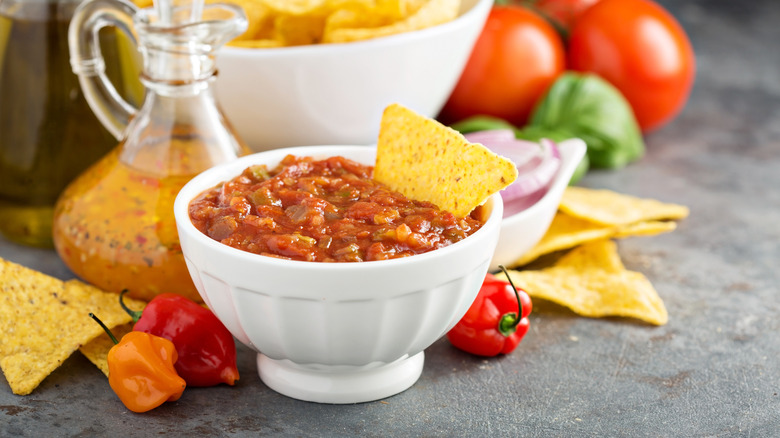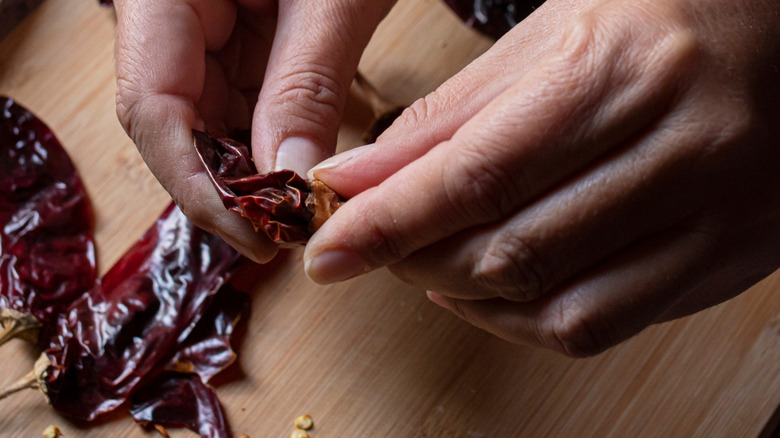The Simple Rule To Follow When Adding Chiles To Homemade Salsa
Making salsa at home can be a fun way to spice up taco night or put your home stamp on a cocktail hour snack. You get to choose your flavors, your heat levels, and if all goes well, you can even jar it and send it to friends and family as a thoughtful, personalized present. While it's relatively simple to make a good salsa, there are some keys to remember to ensure you maximize your flavor. One of the most important is to toast your chiles — just as vital in a chipotle salsa as a charred tomato one.
According to chef and restauranteur Richard Sandoval, this is one of the most important steps to getting flavor from dried chiles. He told Food Republic, "Toasting dried chiles in a dry pan or lightly frying them releases their oils and deepens their flavor. If you skip this step, the salsa can taste flat."
When it comes to whether to use fresh or dried chiles in your salsa, the answer is a simple one: Why not both? The two forms of pepper provide different attributes that will impact the overall flavor of the salsa. "Fresh chiles add brightness and heat, while dried chiles bring deeper, smoky complexity," Sandoval said. "I love using a mix — fresh for vibrancy, dried for depth." Adding a few dried serrano peppers to a salsa verde cruda adds complexity and a robust flavor that balances the vegetal taste of the fresh chiles.
How to pick the perfect ingredients for your salsa
Unless you grew up in a salsa-making culture or have spent years studying its many intricacies and variations, it can be overwhelming when deciding which chiles to choose or how to find the perfect tomatoes. Luckily, Chef Richard Sandoval has you covered.
"Fresh chiles like jalapeños and serranos add crisp, vegetal heat, making them perfect for bright, raw salsas like salsa verde," Sandoval informed us. These peppers are also perfect for adding a kick to fresh, fruit-based sauces like watermelon salsa. Serranos tend to run hotter than jalapeños, especially now, after 20 years of cultivation of jalapeños designed to make them bigger and less spicy, so the choice can come down to how much you want to regulate your heat.
Two popular dried chile varietals are ancho and guajillo. According to Sandoval, "Ancho chiles bring a mild, raisin-like sweetness, while guajillos offer a more tangy, slightly spicy kick." For example, guajillos are perfect in your basic adobo sauce, but you can also swap in ancho chiles if you want something milder.
There are nearly as many options when it comes to tomatoes. The best tomato for your salsa depends largely on type: smoky, fresh, or spicy. Naturally, tomatillos and green zebras are ideal for salsa verde while a simple beefsteak tomato is all you need for pico de gallo, but if you're looking to make a smoky salsa, consider roasted plum tomatoes. Amana orange tomatoes can be a perfect complement to either habanero or fruity, tropical salsas.


